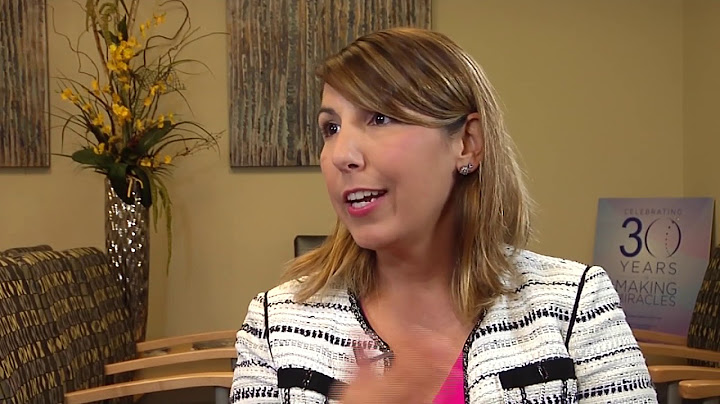What ovulation signs can I look out for if I'm trying to conceive?Answer From Mary Marnach, M.D. Show
Understanding when you're ovulating — and having sex regularly five days before and on the day of ovulation — can improve the odds of conceiving. Ovulation is the process in which a mature egg is released from the ovary. After it's released, the egg moves down the fallopian tube and stays there for 12 to 24 hours, where it can be fertilized. Sperm can live inside the female reproductive tract as long as five days after sexual intercourse under the right conditions. Your chance of getting pregnant is highest when live sperm are present in the fallopian tubes during ovulation. In an average 28-day menstrual cycle, ovulation typically occurs about 14 days before the start of the next menstrual period. However, each person's cycle length may be different, and the time between ovulation and the start of the next menstrual period may vary. If, like many women, you don't have a 28-day menstrual cycle, you can determine the length of your cycle and when you're most likely to ovulate by keeping a menstrual calendar. Beyond the calendar, you can also look for ovulation signs and symptoms, including:
You also might want to try an over-the-counter ovulation kit, which can help you identify when you're most likely to ovulate. These kits test your urine for the surge in hormones that takes place before ovulation. Ovulation occurs about 36 hours after a positive result. Sign up for free, and stay up to date on research advancements, health tips and current health topics, like COVID-19, plus expertise on managing health. To provide you with the most relevant and helpful information, and understand which information is beneficial, we may combine your email and website usage information with other information we have about you. If you are a Mayo Clinic patient, this could include protected health information. If we combine
this information with your protected health information, we will treat all of that information as protected health information and will only use or disclose that information as set forth in our notice of privacy practices. You may opt-out of email communications at any time by clicking on the unsubscribe link in the e-mail. Dec. 07, 2021
See more Expert Answers Products and Services
See also
. If you are trying to become pregnant, your chances will be improved if you have sex at a particular time of your cycle. Knowing when you ovulate – when an egg is released from your ovaries – is the key to knowing when that right time is. When you are most fertileThe 5 days before ovulation, together with the day you ovulate, are the days when you are most likely to conceive. Sperm can live up to 5 days inside your body, so if you have sex up to 5 days before your egg is released, you can get pregnant. After ovulation, though, your egg can only live for 12 to 24 hours. After this time is up, your time for getting pregnant has gone for now till the following month. Your chances of getting pregnant are at their highest in the 3 days leading up to and including ovulation. Predicting ovulationOvulation usually happens about halfway through your menstrual cycle, about 14 days before the first day of your next period, but the exact time can vary. Although signs that you are about to ovulate can be subtle, there are some things you can pay attention to and track over time to help you predict your fertile window. Changes in mucusNoticing how your vaginal secretions change during your menstrual cycle is the basis of the Billings ovulation method. Around the time of ovulation, you may notice your secretion is clear, stretchy and slippery — similar to egg whites. After ovulation, when the chances of becoming pregnant drop, the secretion tends to become cloudy and thick, or disappear entirely. Changes in body temperatureWhen you’ve just ovulated, your body temperature may increase very slightly, by about half a degree Celsius. If you’re using temperature as a means of keeping track of when you are most fertile, you need to use a special thermometer to take your temperature every morning before you get out of bed. If you record the readings every day using a graph or a spreadsheet, it’s possible to learn your pattern over time. The time when you are most fertile is 2 to 3 days before the rise in temperature. Other signsThere may be other signs that you are near the time of ovulation, such as mild abdominal cramps, breast tenderness or increased sex drive. However, using these signs to predict when you’re fertile is not the most reliable method. Using ovulation calculators and kitsOvulation calendars and kits can also help you predict ovulation. Ovulation calendars are available on websites such as www.yourfertility.org.au, and use the date of your last period and the length of your cycle to predict when you are likely to be most fertile. Home ovulation predictor kits are available from pharmacies. You use the kit a few days before your predicted ovulation day, to test for a rise in the level of a hormone called luteinising hormone (LH) in your urine. A positive result indicates you will ovulate within the next 24 to 36 hours. A blood test, which your doctor can order, can also detect ovulation by measuring levels of the hormone progesterone. If you are trying to get pregnant, there are also a number of other things you should consider, such as taking folate, maintaining a healthy diet and making sure your vaccinations are up to date. For more information and support, call Pregnancy, Birth and Baby on 1800 882 436. What are the chances of getting pregnant right before ovulation?If a woman has sex six or more days before she ovulates, the chance she will get pregnant is virtually zero. Then, the probability of pregnancy rises steadily and is 27-33% in the three days leading up to and including ovulation.
How do you know if you conceived before ovulation?Some women may notice symptoms as early as 5 DPO, although they won't know for certain that they are pregnant until much later. Early signs and symptoms include implantation bleeding or cramps, which can occur 5–6 days after the sperm fertilizes the egg. Other early symptoms include breast tenderness and mood changes.
|

Related Posts
Advertising
LATEST NEWS
Advertising
Populer
Advertising
About

Copyright © 2024 muatrau Inc.


















